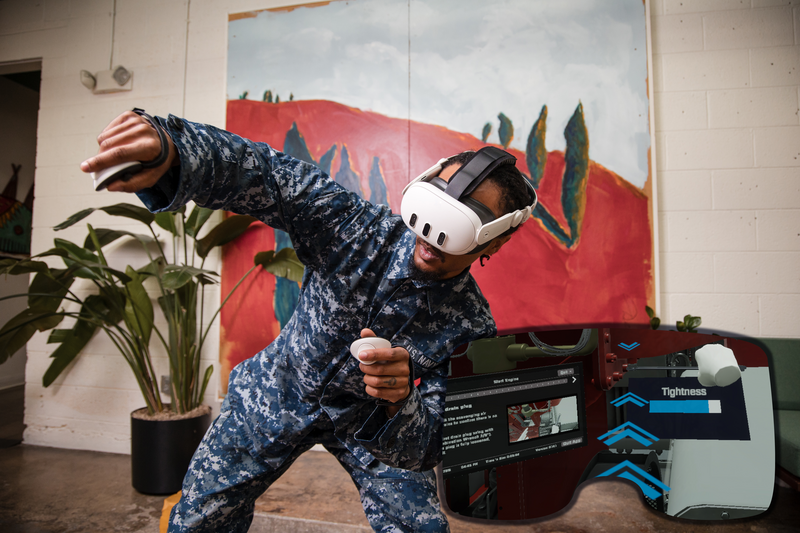ATD Blog
The Navy Brings Training to the Fleet With VR
Wed May 08 2024

A new generation of virtual reality (VR) training simulations is poised to transform legacy just-in-case classroom training in the US Navy into just-in-time training on ships and submarines. Affordable stand-alone VR can multiply reps and sets of immersive practices before sailors apply real-life skills.
The Navy partnered with my firm to demonstrate the value of VR training by converting a legacy touchscreen maintenance training program into a VR simulation that completely engulfs users. Sailors step into a virtual submarine machinery room of such convincing fidelity that they experience a sense of being there. Turning valves and tightening bolts, they feel tactile vibration in their hands and hear the diesel engine roar to life when started. The program is self-paced with tutorials, feedback loops, and scaffolding.
Testers gave the VR program a perfect score and said, “You felt like you are actually working on the system and not just a screen!” This enthusiasm resonated with submarine leaders and has sparked a flurry of ideas to enhance fleet readiness with VR learning at the point of need, whether it’s in port or underway.
Anyone who hasn’t experienced the startling sensation of being transported to a virtual environment and performing hands-on tasks under stress, like troubleshooting a flooded diesel engine in a submarine machinery room, probably won’t appreciate how far VR technology has come. The feeling of presence is so convincing that students forget that they’re not actually there. Users pick up the wrench with their virtual hands, fit it onto the bolt, and turn it, feeling like they are inside a submarine.
The hyper-realistic models, directional sound, and vibrating hand controllers “hack their senses” of sight, feeling, and hearing. Fully absorbed, they lose track of time and enter a state of "flow" as they learn and practice skills in a safe environment. Students and instructors from all over the world (or co-located) can interact seamlessly, appearing as avatars collaborating on tasks and debriefing, learning with and from each other in the context of the performance environment.
An instructor screen follows students through every step as they navigate the diesel engine, providing videos and text instructions to guide them through starting up the engine. Students grab the instruction screen and position it in mid-air at a location most suitable for the task they’re performing. Just like in real life, they use their hands to turn valves, push buttons, check gauges, tighten bolts, and pull levers. If they make a mistake, the sim scenario can easily be reset, as VR has unlimited redos. Arrows at the user’s feet show them where to walk to their next task. They have the option to physically walk around the simulated submarine if their real-world space is large enough, or use controller thumbsticks to navigate the virtual space while seated or standing stationary.
The new-gen low-cost, stand-alone VR headsets are portable and easily deployable at the point of need, even when physically aboard a submarine. They don’t need cords or a PC and can be experienced seated or standing, self-paced or multi-player. When comfort, space, or security aboard ships make VR usage challenging, sailors can still use the application on handheld gaming PCs (like Asus ROG Ally).
The project is still in the R&D phase by the Naval Air Warfare Center Training Systems Division, but early feedback should inspire other organizations to upskill and reskill their workforce with extended reality (XR) practice spaces that mirror their real-life workplaces. Learning through hands-on exercises at the moments of need, people can build muscle memory and cognitive mastery in the presence of peers and experts. XR promises to accelerate learning at scale, saving lives, sharpening skills, and flattening the learning curve.
Join my ATD24 session in New Orleans, Louisiana, The Future of Learning Is Spatial, to step inside the new reality-bending sims that reinvent learning for Fortune 50 companies and government leaders.
